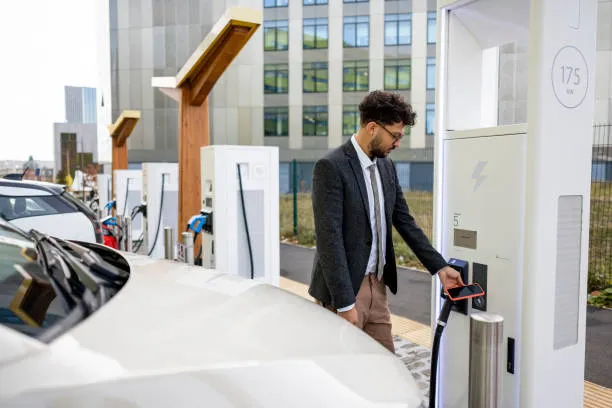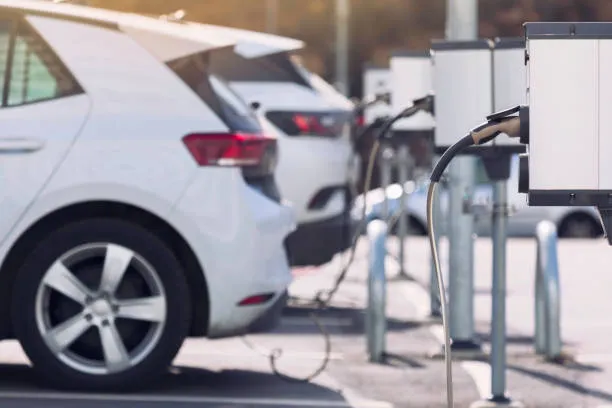The hum of an electric motor is steadily replacing the roar of combustion engines. The electric vehicle (EV) revolution is no longer a distant dream; it’s a rapidly unfolding reality. But what does the future hold for EVs and the infrastructure that supports them? Let’s delve into the key trends, challenges, and innovations shaping this transformative industry.
1. The Surge in EV Adoption: Beyond the Hype
- 1.1. Market Growth and Projections:
- The global EV market is experiencing exponential growth, with projections indicating a significant percentage of new car sales will be electric within the next decade.
- Factors like government incentives, increasing consumer awareness, and advancements in battery technology are driving this surge.
- Key words: EV market growth, electric vehicle sales, future of EVs.
- 1.2. Consumer Trends and Preferences:
- Consumers are increasingly prioritizing sustainability, fuel efficiency, and technological advancements.
- The availability of diverse EV models, from compact cars to SUVs and trucks, is catering to a wider range of preferences.
- Range anxiety is decreasing as battery technology improves.
- Key words: consumer EV trends, EV adoption, sustainable transportation.

2. Advancements in Battery Technology: Powering Longer Journeys
- 2.1. Solid-State Batteries:
- Solid-state batteries are emerging as a game-changer, offering higher energy density, faster charging times, and improved safety compared to traditional lithium-ion batteries.
- These advancements will significantly extend EV range and reduce charging times.
- Key words: solid-state batteries, EV battery technology, battery advancements.
- 2.2. Battery Recycling and Sustainability:
- As the number of EVs on the road increases, sustainable battery recycling practices are crucial.
- Efforts are underway to develop efficient and environmentally friendly battery recycling processes.
- This includes the reuse of battery components, and the recapture of rare earth metals.
- Key words: EV battery recycling, sustainable EVs, battery lifecycle.

3. The Evolution of Charging Infrastructure: Building a Seamless Network
- 3.1. Public Charging Networks:
- The expansion of public charging networks is essential to alleviate range anxiety and support widespread EV adoption.
- Fast-charging stations are becoming increasingly common, enabling drivers to quickly replenish their batteries on the go.
- Companies and governments are investing heavily into these infrastructures.
- Key words: EV charging infrastructure, public charging stations, fast charging.
- 3.2. Home Charging Solutions:
- Home charging is a convenient and cost-effective option for EV owners.
- Smart charging systems allow users to optimize charging times and reduce energy costs.
- Level 2 home chargers are becoming more popular.
- Key words: home EV charging, smart charging, EV charging solutions.
- 3.3. Wireless Charging and Innovative Technologies:
- Wireless charging technology is being developed to provide a more convenient and seamless charging experience.
- Inductive charging and other innovative technologies are being explored to further enhance charging efficiency.
- Vehicle-to-grid (V2G) technology is also being developed.
- Key words: wireless EV charging, V2G, innovative charging.
4. The Role of Smart Grids and Energy Management:
- 4.1. Integrating EVs with the Grid:
- Integrating EVs with smart grids is crucial to ensure a stable and efficient energy supply.
- Smart grid technologies enable dynamic energy management, allowing EVs to contribute to grid stability and balance energy demand.
- Key words: smart grids, EV grid integration, energy management.
- 4.2. Vehicle-to-Grid (V2G) Technology:
- V2G technology allows EVs to act as mobile energy storage units, providing power back to the grid during peak demand.
- This technology can enhance grid resilience and support the integration of renewable energy sources.
- Key words: V2G technology, grid resilience, renewable energy.

5. Autonomous Driving and Connected EVs: The Future of Mobility
- 5.1. Autonomous Driving Technologies:
- The integration of autonomous driving technologies with EVs is transforming the future of mobility.
- Self-driving EVs offer enhanced safety, efficiency, and convenience.
- Key words: autonomous EVs, self-driving cars, future of mobility.
- 5.2. Connected Vehicle Technologies:
- Connected vehicle technologies enable seamless communication between EVs, infrastructure, and other devices.
- This connectivity enhances safety, efficiency, and the overall driving experience.
- Key words: connected EVs, vehicle connectivity, smart transportation.
6. Addressing the Challenges: Overcoming Obstacles to EV Adoption
- 6.1. Infrastructure Development:
- Expanding charging infrastructure, particularly in rural areas, is a key challenge.
- Investing in fast-charging stations and ensuring interoperability between charging networks is essential.
- Key words: EV infrastructure challenges, charging network expansion.
- 6.2. Battery Costs and Affordability:
- Reducing battery costs and making EVs more affordable is crucial to accelerate adoption.
- Advancements in battery technology and economies of scale will play a significant role.
- Key words: EV affordability, battery cost reduction.
- 6.3. Grid Stability and Energy Demand:
- Managing the increased energy demand from EVs and ensuring grid stability is a critical consideration.
- Smart grid technologies and efficient energy management systems are essential.
- Key words: EV grid impact, energy demand, grid stability.
7. Government Policies and Incentives: Driving the Transition
- 7.1. Government Regulations and Standards:
- Government regulations and standards play a crucial role in promoting EV adoption and ensuring safety.
- Incentives such as tax credits and subsidies can encourage consumers to switch to EVs.
- Key words: EV government policies, EV incentives, regulations.
- 7.2. Public-Private Partnerships:
- Public-private partnerships are essential for developing and deploying EV infrastructure.
- Collaboration between governments, automakers, and energy companies is crucial.
- Key words: public-private EV partnerships, EV collaboration.
8. The Environmental Impact: A Sustainable Future
- 8.1. Reducing Carbon Emissions:
- EVs offer a significant opportunity to reduce carbon emissions and mitigate climate change.
- The transition to electric mobility is a key component of a sustainable future.
- Key words: EV environmental impact, carbon emission reduction, sustainable transportation.
- 8.2. Sustainable Manufacturing and Supply Chains:
- Ensuring sustainable manufacturing and supply chains for EVs is crucial.
- Efforts are underway to reduce the environmental impact of battery production and sourcing materials.
- Key words: sustainable EV manufacturing, EV supply chains, green technology.
The future of electric vehicles and their infrastructure is bright, filled with innovation and the promise of a cleaner, more efficient transportation system. While challenges remain, the momentum is undeniable. By embracing technological advancements, fostering collaboration, and implementing supportive policies, we can pave the way for an electric future.
Do Follow USA Glory For More Updates.






